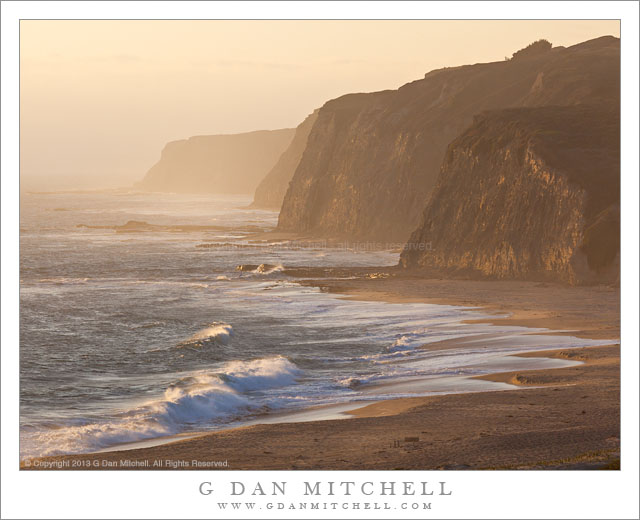My apologies, but as a result of a move to a new hosting company this article is no longer available. I’m hopeful that I’ll be able to recreate it or a replacement eventually.
Category Archives: Technique
Wide Angle Lenses and Image Stabilization
I often hear people claim that image-stabilization is only of value on normal to long focal length lenses, and is not useful on wide angle and ultra wide angle lenses.
The photograph posted earlier today was shot handheld on a full frame DSLR at 1/25 second at ISO 800 and 32mm. (32mm on full frame is equivalent to using a 20mm focal length on a 1.6x cropped sensor body.)
I had just finished a session of tripod-based landscape shooting on the summit of this dome, had packed up, and was heading down when the lone hiker crossed the ridgeline below me just as some lovely post-sunset light gently illuminated the landscape. Having no time to set up a tripod – hiker and light would have been gone by then – I dropped everything, pulled the camera with image-stabilized 24-105mm lens from the pack, made some quick seat-of-the-pants exposure calculations, and got of three quick frames before the scene was gone. Without IS I simply would not have gotten a usable version of this photograph – a photograph that has since been licensed for use in a print journal.
Even as one who often shoots from a tripod – and almost always carries one – I have found the notion that IS has no value at shorter focal lengths to be a myth not born out in actual practice.
Lowepro Toploader AW
I do a lot of backpacking photography, frequently going out for periods of many days or even a couple weeks and carrying camera equipment across high (occasionally trail-less) passes in the Sierra Nevada range. There is a whole range of issues to sort out when you do this sort of back-country photography including:
- How much gear to take — what do you really need and how much weight are you willing to lug?
- How to keep the camera and necessary accessories reasonably accessible.
- How to sufficiently protect the camera equipment from weather and from other dangers.
- How to integrate systems for carrying camera equipment with those used for carrying regular backpacking gear.
I’ve described my current backpacking photography setup in detail elsewhere, so here I’ll focus on one key element in my solution, a Lowepro Toploader AW bag. (Mine is a slightly older model – a “TLZ AW.” The current incarnations have a slightly different name. The last time I checked they were the “Lowepro Toploader 75 AW Camera Holster Bag” and the “Lowepro Toploader 65 AW Camera Holster Bag.”) Continue reading Lowepro Toploader AW
Thoughts About Long Zooms and Primes and ‘Image Quality’
A lot of photographers sweat the decisions about what long lenses to purchase. Among Canon users a common decision is whether to get a high quality telephoto prime (plus one or more teleconverters) or to get a telephoto zoom. Perhaps the most common question is whether to get a 300mm L prime (f2.8 IS or f4 IS) or the 100-400mm f/4.5-5.6L IS USM.
Many seem to focus on the image quality (“IQ”) issue a lot when trying to figure this out. It is true that the primes have an edge on the basis of pure resolution compared to the zooms. At 300mm the prime will “beat” the zoom at the same focal length. But, as many have figured out, it isn’t quite as simple as determining which lens is “sharpest” – other factors can affect the answer to that question, and sharpness is not the only issue.

Continue reading Thoughts About Long Zooms and Primes and ‘Image Quality’
